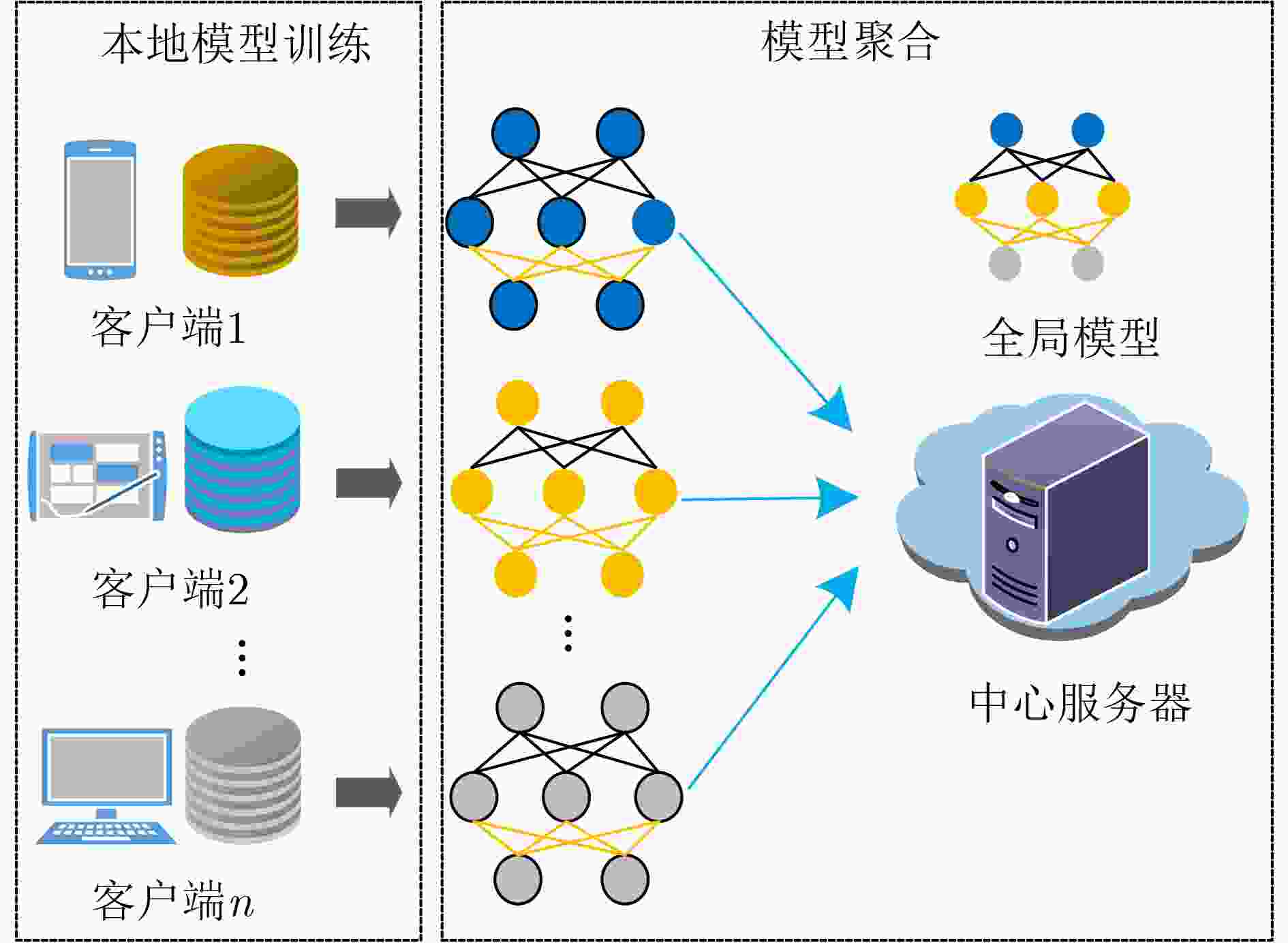| [1] |
MCMAHAN B, MOORE E, RAMAGE D, et al. Communication-efficient learning of deep networks from decentralized data[C]. The 20th International Conference on Artificial Intelligence and Statistics, Fort Lauderdale, USA, 2017: 1273–1282.
|
| [2] |
WEN Guanghui, FU Junjie, DAI Pengcheng, et al. DTDE: A new cooperative multi-agent reinforcement learning framework[J]. The Innovation, 2021, 2(4): 100162. doi: 10.1016/j.xinn.2021.100162
|
| [3] |
YANG Qiang, LIU Yang, CHENG Yong, et al. Federated Learning[M]. Cham, Germany: Springer, 2020: 82–85.
|
| [4] |
LIM W Y B, LUONG N C, HOANG D T, et al. Federated learning in mobile edge networks: A comprehensive survey[J]. IEEE Communications Surveys & Tutorials, 2020, 22(3): 2031–2063. doi: 10.1109/COMST.2020.2986024
|
| [5] |
PFITZNER B, STECKHAN N, and ARNRICH B. Federated learning in a medical context: A systematic literature review[J]. ACM Transactions on Internet Technology, 2021, 21(2): 50. doi: 10.1145/3412357
|
| [6] |
TAN Kang, BREMNER D, LE KERNEC J, et al. Federated machine learning in vehicular networks: A summary of recent applications[C]. 2020 International Conference on UK-China Emerging Technologies, Glasgow, United Kingdom, 2020: 1–4.
|
| [7] |
AJI A F and HEAFIELD K. Sparse communication for distributed gradient descent[C]. The 2017 Conference on Empirical Methods in Natural Language Processing, Copenhagen, Denmark, 2017: 440–445.
|
| [8] |
REISIZADEH A, MOKHTARI A, HASSANI H, et al. FedPAQ: A communication-efficient federated learning method with periodic averaging and quantization[C]. The 23rd International Conference on Artificial Intelligence and Statistics, Palermo, Italy, 2020: 2021–2031.
|
| [9] |
王长城, 戚国庆, 李银伢, 等. 量化状态信息下多智能体Gossip算法及分布式优化[J]. 电子与信息学报, 2014, 36(1): 128–134. doi: 10.3724/SP.J.1146.2013.00297WANG Changcheng, QI Guoqing, LI Yinya, et al. Multi-agent gossip consensus algorithm with quantized data and distributed optimizing[J]. Journal of Electronics &Information Technology, 2014, 36(1): 128–134. doi: 10.3724/SP.J.1146.2013.00297
|
| [10] |
BASU D, DATA D, KARAKUS C, et al. Qsparse-local-SGD: Distributed SGD with quantization, sparsification, and local computations[J]. IEEE Journal on Selected Areas in Information Theory, 2020, 1(1): 217–226. doi: 10.1109/JSAIT.2020.2985917
|
| [11] |
LI Zhize, KOVALEV D, QIAN Xun, et al. Acceleration for compressed gradient descent in distributed and federated optimization[C/OL]. The 37th International Conference on Machine Learning, 2020: 547.
|
| [12] |
HADDADPOUR F, KAMANI M M, MOKHTARI A, et al. Federated learning with compression: Unified analysis and sharp guarantees[C/OL]. Proceedings of the 24th International Conference on Artificial Intelligence and Statistics, 2021: 2350–2358.
|
| [13] |
GAO Huimin, WANG Lin, ZHU Junlong, et al. Federated optimization based on compression and event-triggered communication[C]. The 36th Youth Academic Annual Conference of Chinese Association of Automation, Nanchang, China, 2021: 517–522.
|
| [14] |
TGEORGE J and GURRAM P. Distributed stochastic gradient descent with event-triggered communication[C]. The 34th AAAI Conference on Artificial Intelligence, New York, USA, 2020: 7169–7178.
|
| [15] |
HSIEH K, HARLAP A, VIJAYKUMAR N, et al. Gaia: Geo-distributed machine learning approaching LAN speeds[C]. The 14th USENIX Conference on Networked Systems Design and Implementation, Boston, USA, 2017: 629–647.
|
| [16] |
SINGH N, DATA D, GEORGE J, et al. SQuARM-SGD: Communication-efficient momentum SGD for decentralized optimization[J]. IEEE Journal on Selected Areas in Information Theory, 2021, 2(3): 954–969. doi: 10.1109/JSAIT.2021.3103920
|
| [17] |
BOTTOU L, CURTIS F E, and NOCEDAL J. Optimization methods for large-scale machine learning[J]. SIAM Review, 2018, 60(2): 223–311. doi: 10.1137/16M1080173
|
| [18] |
KARIMI H, NUTINI J, and SCHMIDT M. Linear convergence of gradient and proximal-gradient methods under the polyak-łojasiewicz condition[C]. The Joint European Conference on Machine Learning and Knowledge Discovery in Databases, Riva del Garda, Italy, 2016: 795–811.
|
| [19] |
LECUN Y, BOTTOU L, BENGIO Y, et al. Gradient-based learning applied to document recognition[J]. Proceedings of the IEEE, 1998, 86(11): 2278–2324. doi: 10.1109/5.726791
|
| [20] |
XIAO Han, RASUL K, and VOLLGRAF R. Fashion-MNIST: A novel image dataset for benchmarking machine learning algorithms[J]. arXiv: 1708.07747, 2017.
|
| [21] |
PASZKE A, GROSS S, MASSA F, et al. PyTorch: An imperative style, high-performance deep learning library[C]. The 32th International Conference on Neural Information Processing Systems, Vancouver, Canada, 2019: 8024–8035.
|






 下载:
下载:






 下载:
下载:
